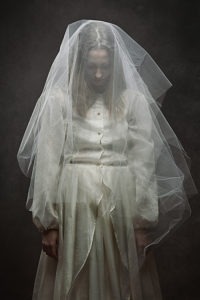
Part II —The Algonquin Resort
By Ted McIntyre
As haunted houses go, few can compete with the majesty of Canada’s grand railway hotels. Built to draw visitors from the far reaches of the globe, a string of luxurious, castle-like accommodations sprung up from coast to coast in the late 1800s to seize advantage of the newly completed transcontinental railway. “If we can’t export the scenery, we’ll import the tourists,” observed Canadian Pacific Railway President William Cornelius Van Horne, who personally selected the inspired Rocky Mountain location of the Banff Springs Hotel, which opened for business on June 1, 1888.
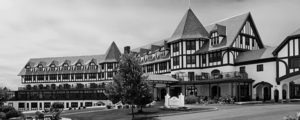 A year later, some 4,400 kilometres due east, The Algonquin Resort at St. Andrews-by-the-Sea in New Brunswick followed suit. Built in the Tudor Revival style, The Algonquin, as with many of the grand railway hotels, was soon accompanied by a golf course that would come to earn similar acclaim.
A year later, some 4,400 kilometres due east, The Algonquin Resort at St. Andrews-by-the-Sea in New Brunswick followed suit. Built in the Tudor Revival style, The Algonquin, as with many of the grand railway hotels, was soon accompanied by a golf course that would come to earn similar acclaim.
Originally laid out in 1894, a five-minute drive from the resort, the scenic design along the shores of Passamaquoddy Bay was blessed with the artistry of legendary golf architect Donald Ross in the 1920s. Toronto’s Thomas McBroom rejuvenated the course in 1990, but it was a major facelift from Rod Whitman in 2017-2018, including two new holes, significant tree clearing and a complete rebunkering, that would re-establish The Algonquin GC to elite status among East Coast designs, with a dramatic four-hole oceanfront sequence to open the back nine and Canada’s oldest clubhouse surveying the property.
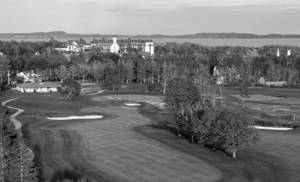 The Algonquin Resort itself has also continued to refine its look. Under the direction of property owner New Castle Hotels and Resorts, it underwent a $53-million retrofit eight years ago, reopening as a member of New Castle’s Autograph Collection.
The Algonquin Resort itself has also continued to refine its look. Under the direction of property owner New Castle Hotels and Resorts, it underwent a $53-million retrofit eight years ago, reopening as a member of New Castle’s Autograph Collection.
Still, the exterior architecture and interior decor pay homage to The Algonquin’s Scottish roots and venerable history—some of it admittedly painful: “On April 11th, 1914, the beauty of all-wood construction would meet its match—literally. Sparks from working roofers ignited flames that would destroy much of the original structure,” the resort’s literature describes. Despite a then-staggering $800,000 in damage, a more modern hotel rose from the ashes a year later, its distinctive new red roof and Tudor styling augmented by rooms boasting such modern amenities as electricity and phones.
INSPIRATION FOR THE SHINING?
Between the two incarnations of the hotel, The Algonquin’s esteemed guestlist has included Canada’s first Prime Minister, Sir John A. MacDonald (and pretty much every Prime Minister since), U.S. Presidents Theodore Roosevelt, Franklin Delano Roosevelt and Lyndon B. Johnson, as well as Prince Charles and Lady Diana.
Another famous visitor was Stephen King, who stayed here prior to penning his chilling novel, The Shining, and who has also returned since.
As with the Overlook Hotel in The Shining, as well as Stanley Kubrick’s psychological horror film of the same name, it’s believed that some guests never got around to checking out of The Algonquin—the most famous being a jilted bride.
“She was a young lady who came here in the early 1900s and was going to get married at a local church in town,” recounts Cullen Johnson, a guest services agent at The Algonquin since 2017. “She was stood up at the altar, so spent the entirety of what was supposed to be the best day of her life crying alone in her hotel room—Room 473.”
As one peers out the window today from this prominent perch, which occupies the near centre of the hotel’s top floor, with the quaint town of Saint Andrews and the water beyond, there’s a rooftop garden two storeys down. But more than a century ago there was nothing to separate one from the solid roadway below. Thus, Room 473 might provide sufficient height for a lethal recourse to her woes, the beleaguered bride surmised.
“Some time that evening she jumped from the fourth floor in her wedding dress, and did not survive,” Johnson says. “Many think she still haunts the hotel. We have a few ways of knowing that she’s still around, the biggest being that you often hear her crying late at night, or even screaming on occasion, even when nobody is staying in that room. We also have a manifestation of a puddle of tears that reoccurs in 473. I actually did a ghost tour last week and a woman told me that she’d been married here last year, and the morning of her wedding they discovered a puddle in the middle of the room. Afterward, she heard about the story of the bride. ‘I think she was keeping an eye out for me on my wedding day,’ the guest told me.
“Sometimes we have to put the room out of order to wait for it to clear up,” Johnson notes. “But there never seems to be any water damage or ceiling damage. And it’s on the fourth floor, which is an odd place for something like that to occur. But I think the bride also travels downward sometimes. We’ve had calls from guests in Rooms 373 and 273 in the middle of the night saying, ‘I swear I just saw a flash of light above my head.’”
Guests have also claimed sightings of an illuminated woman in white in The Algonquin’s rooftop tower, although the tower is off limits, even to staff.
WHAT’S INSIDE THE CLOSET?
While most hotels tend not to advertise their ghoulish past, The Algonquin embraces it. In fact, there are ghost tours at 8 p.m. each night, free for guests. And some fodder for discussion is fairly fresh.
“In July 2018, I was working the nightshift with Josh Osborne—he was a security guard then and a bellman now,” Johnson relates. “Josh got a call at about 3 a.m. from a guest who said, ‘We heard a loud bang from Room 273—it sounded something like the TV falling off the wall.’ Josh went up there and opened the door and listened, but didn’t hear anything. As he was closing the door, there was a loud bang in the closet. He radioed me and asked if I would come up. The room was unoccupied, but Josh noticed the light in the bathroom was on, and there was still a banging coming from the closet, next to the bathroom. Josh didn’t want to go near the closet to turn off the light. We checked the history of the room to see who had been in there in the past week and there’d been nobody. So for it to be fully clean and dark, except for the bathroom light, was a rather unusual occurrence.”
Cullen and Osborne approached the closet together. “We pulled upon the door. There’s a pipe inside that runs through there, but we didn’t do much investigating beyond that. We were pretty keen to get out of there.”
Johnson is getting used to the odd paranormal experience. “I personally categorize to them as low-activity and high-activity nights,” she says.
Johnson’s current duties include the overnight shift two nights a week as the relief auditor. “I get to stay around the front desk on those occasions. Those are the nights I feel more safe,” she says. “The nights I have to go up to the fourth floor, though, are the spookiest. You get a feeling you’re being watched. And the hallways are a bit narrower. When the hotel was rebuilt, the fourth floor was designed for affluent folks who would visit with their servants—cooks, nannies, maids—and it can sometimes feel drafty through those hallways, and you get this sense of unease.
“The big one for me, though, was the little boy,” Johnson shares. “The story—which was never officially confirmed—goes that a little boy was staying with his mother on the fourth floor, and he was bouncing a little red ball, and bounced it out a window. As he chased after it, he fell through the screen. His mother tried to grab him, and they both fell to their death. But sometimes you’ll still see that little boy around the hotel, playing with that red ball. The first summer I worked here, one of my responsibilities was to slip the bills under the doors each night. I had a bill to drop under the door at Room 474 one night in August. There’s a fork there: Room 473 on the left and 474 on the right. As I was walking down the hallway and veering right, I looked to my left and there was a little boy on the floor…at 3 a.m. I turned to go to Room 474, slipped the bill under the door, then turned back to look for the little boy, but he was gone. I radioed down to the front desk to ask what families were staying on the fourth floor, but they called back that there were no families in that wing. So I started freaking out and came down to the lobby, and one of my coworkers said, ‘Are you sure it wasn’t the little boy?’ He took me downstairs, and just outside the New Brunswick Ballroom there’s an old photo of the hotel gallery with all these different chairs back in the day, and there’s an almost translucent image of this little boy sitting in one of the chairs. But I could tell it was the exact same kid. His skin is very pale and he has dark curly hair. It takes you a few seconds to see his features, but if you have a smartphone and try to take a picture of him in the chair, the facial recognition will usually identify him and put a little box around his face. He’s wearing a round-necked T-shirt with a darker V-necked sweater overtop with a little lapel on it. When I saw him in the hallway, I thought it he might have just been wearing pajamas—but that outfit is exactly what he was wearing.”
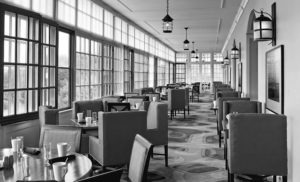 There have been other repeated sightings within the Algonquin’s walls—thankfully of a less sleep-depriving nature. There’s the mischievous apparition in the dining room said to be responsible for often rearranging place settings that have been meticulously laid out the night before by closing staff. And there’s the nightwatchman whose keys can be heard jingling through the stairwell and in the hallways. But the most beloved might be the phantom bellhop, who has conversed with some guests while helping others to their rooms, before vanishing into thin air—his description precisely matching that of a former staff member who has passed on.
There have been other repeated sightings within the Algonquin’s walls—thankfully of a less sleep-depriving nature. There’s the mischievous apparition in the dining room said to be responsible for often rearranging place settings that have been meticulously laid out the night before by closing staff. And there’s the nightwatchman whose keys can be heard jingling through the stairwell and in the hallways. But the most beloved might be the phantom bellhop, who has conversed with some guests while helping others to their rooms, before vanishing into thin air—his description precisely matching that of a former staff member who has passed on.
As fate would have it, the lone fatality from the 1914 fire was a bellman. Ironically, the only surviving piece from that fire, currently in storage after renovations, was the hotel’s bell desk—upon which, perhaps, the registry was once signed by a hopeful bride-to-be.
Check out all five parts in this ghostly series:
Part I: Legends of the Abbey
Part II: The Algonquin Resort
Part III: War on the Shore: Niagara-on-the-Lake
Part IV: Spirits of the West: The Banff Springs and Jasper Park Lodge
Part V: Ghost Town, B.C.: Victoria and the Spirit of Doris Gravlin

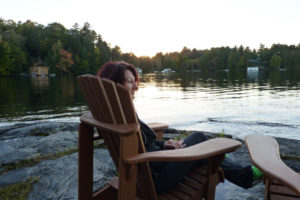
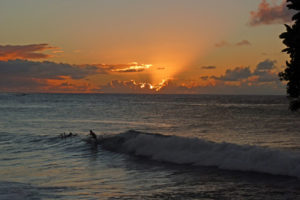

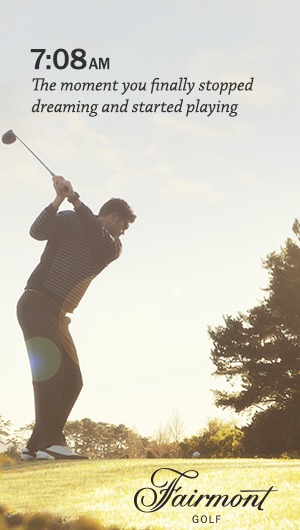
7 Comments
Leave your reply.